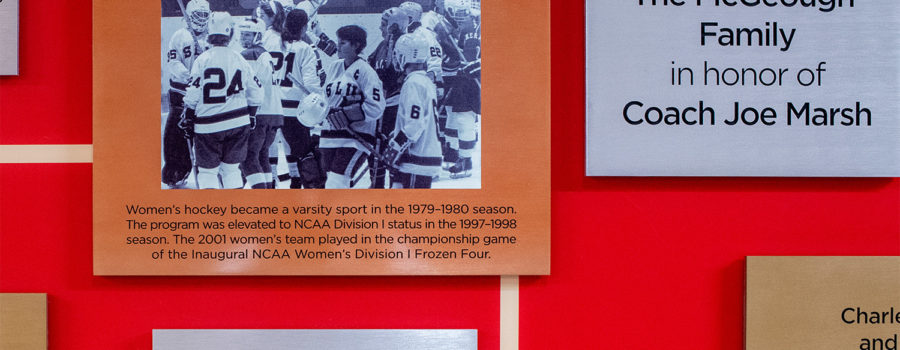Spotlight on Recognition Signage
Recognition Signage is the general term for all honorific signage, including recognition of academic and athletic honors and donor recognition. In a nutshell, Recognition Signage draws attention to the accomplishments of an individual or a group.
Recognition Signage is often designed with flexibility and longevity in mind, with elements that allow for growth and change over time. When done properly, the design becomes an iconic part of the architectural environment. At ASI, with experience in bringing Recognition Signage concepts to life, our goal is to complement the architectural integrity of a space while integrating the brand, mission and values of an organization.
Types of Recognition Signage

Recognition Sign
Typically lists the name of one or more person or family being recognized. A recognition sign is usually printed on acrylic or aluminum and installed on the interior of a building, such as an integrated Room Identification sign.
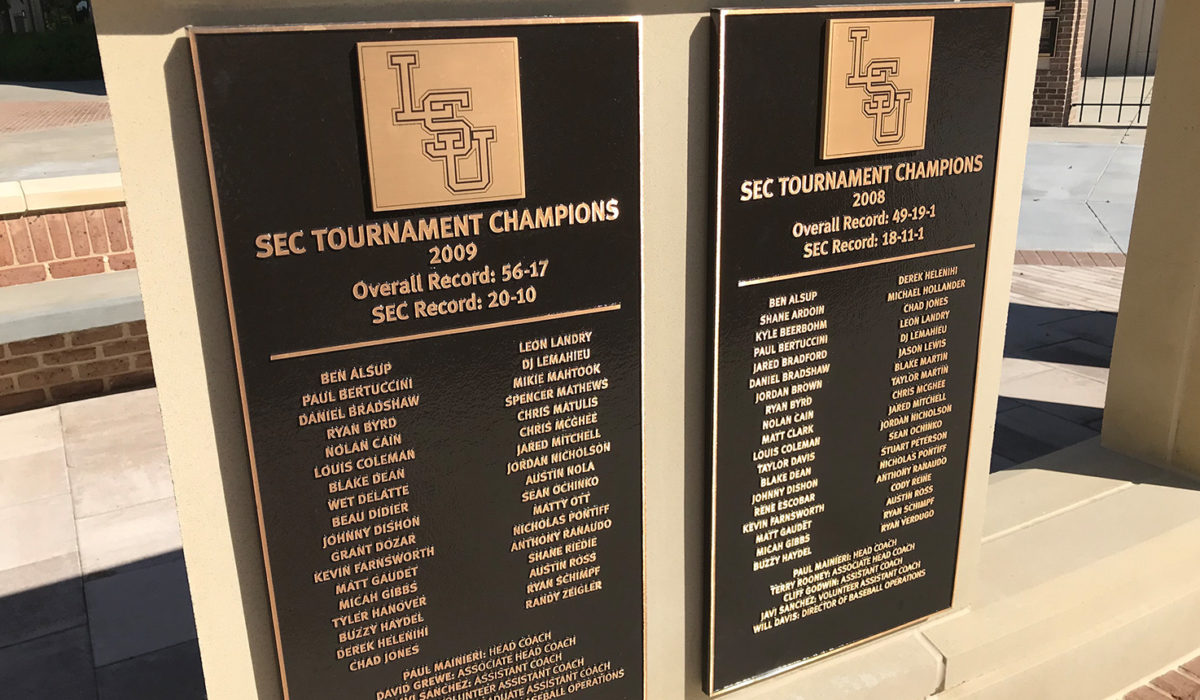
Recognition Plaque
Plaques are more traditional and normally honor an individual, organization, or small group of individuals. Plaques are made of materials such as cast bronze for a polished, long-lasting testament to those being recognized.
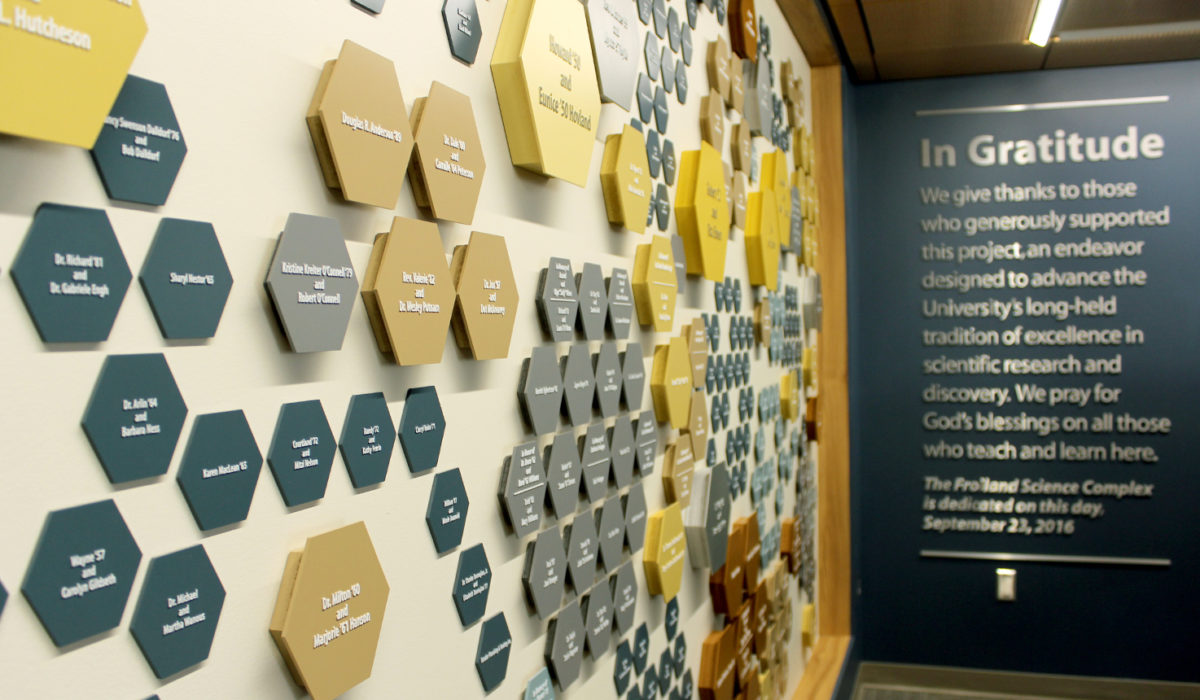
Recognition Wall
Recognition walls consist of multiple signs or one large sign system that displays many names. Often, recognition walls are permanent installations that contain digital or modular elements for future updates.
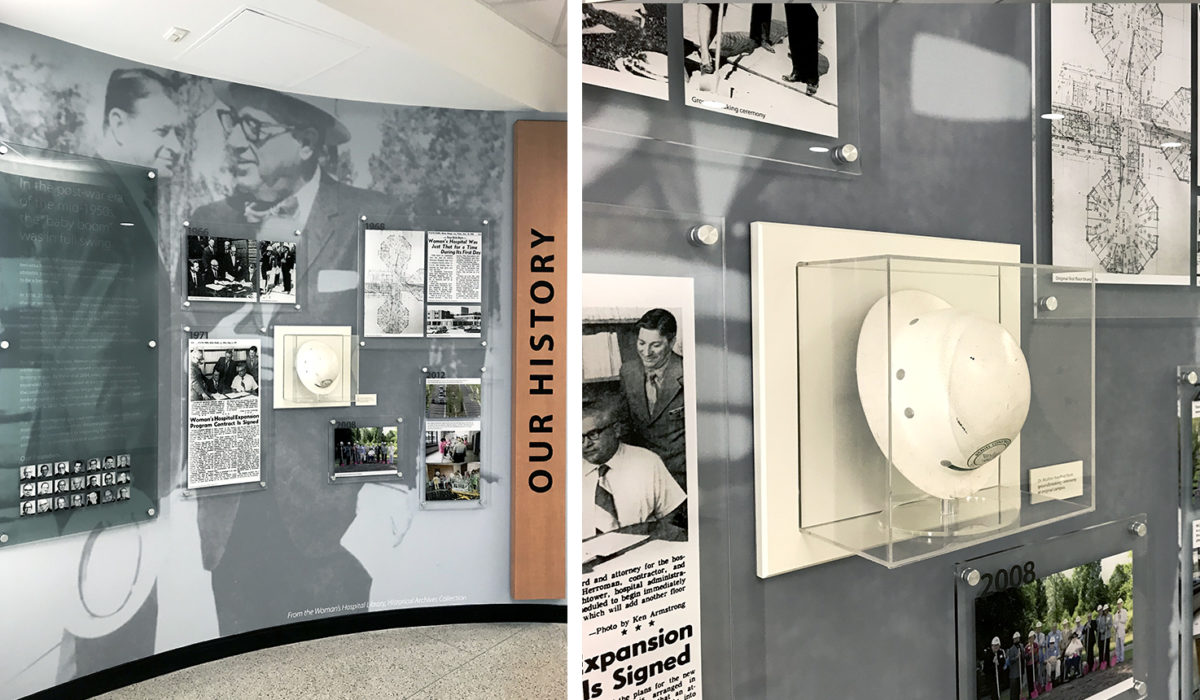
History Wall
A more intricate recognition wall may contain historic milestones that speak to the legacy of the organization. This type of installation, also called a History Wall, typically contains dates, photos and memorabilia.
Top 3 Areas of Impact
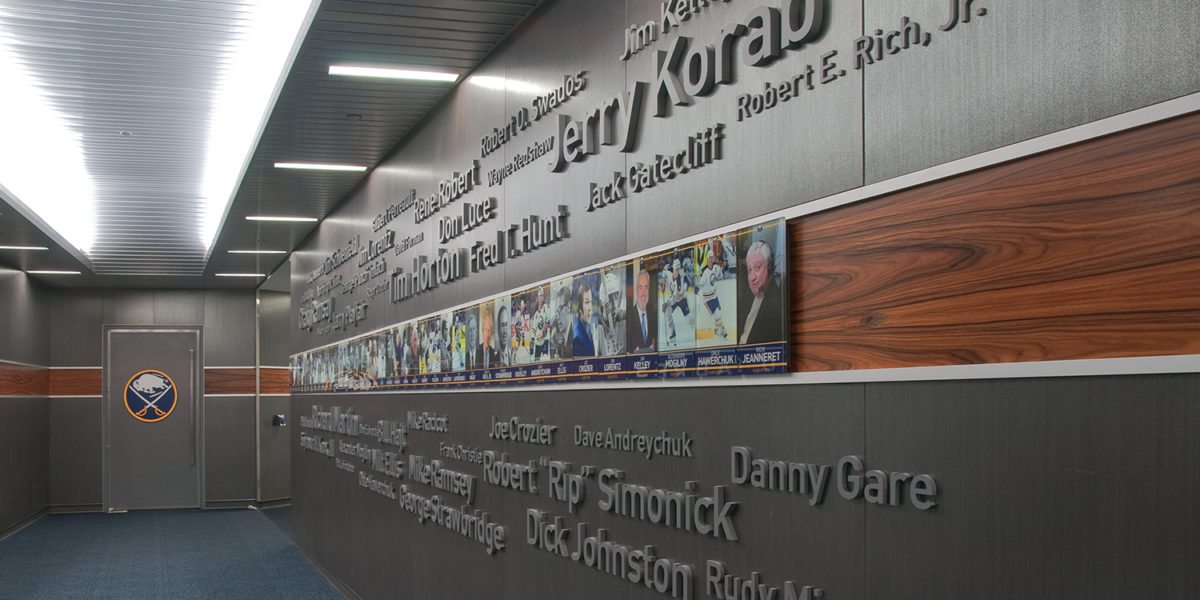
Recognition Signage is an impactful, dynamic and educational option for a multitude of market segments such as educational institutions, business organizations, athletic departments, non-profit agencies, religious institutions and cultural centers. The top 3 impacts of Recognition Signage are as follows:
1. Appreciation
Company founders, prominent employees, outstanding students or successful athletes can be recognized along with their accomplishments. In cases of donor recognition, public recognition makes clear that your relationship is valued.
2. Legacy
Signage reinforces a sense of pride in the accomplishments of an organization, student or athlete. It also represents a physical testament to a donor’s contributions. Recognition Signage remains on display for a long period of time and reinforces the legacy of those being honored.
3. Inspiration
Displays showcasing successful projects, people and events are encouraging. It’s inspirational to see the milestones achieved by members of our community. For donor recognition, signage can inspire donors to be strong supporters of your organization.
In the case of Donor Recognition Signage, research shows a relationship between donation amount and level of recognition received by donors (Samek & Sheremeta, 2015) as well significant evidence that individuals are more likely to donate when they receive public recognition (Andreoni & Bernheim, 2009).
The process of planning, designing and creating Recognition Signage is especially hands-on with seemingly limitless customizations. Recognition Signage can be fabricated using a variety of materials, from digitally printed vinyl, to fully customized architectural displays that contain elements like memorabilia, photos and documents.
With years of creative experience, ASI’s Graphic Designers can build off of your initial design concept or create a unique, meaningful solution tailored to your organization. Request a Consultation today to discuss how ASI can assist your organization to achieve its signage goals.
Sources:
Andreoni, J. and Bernheim, B. D. (2009). Social Image and the 50-50 Norm: A Theoretical and Experimental Analysis of Audience Effects. Econometrica, 77(5):1607–36.
Samek, A. S. and Sheremeta, R. M. (2013). Recognizing Contributors: An Experiment on Public Goods.
Samek, A. S. and Sheremeta, R. M. (2015). Selective Recognition: How to Recognize Donors to Increase Charitable Giving

